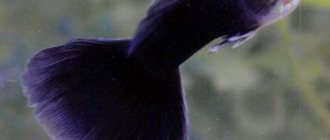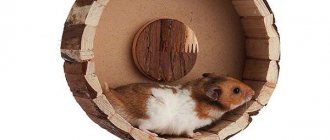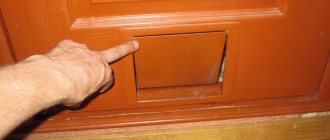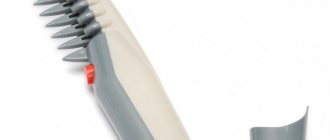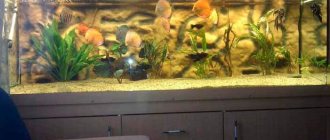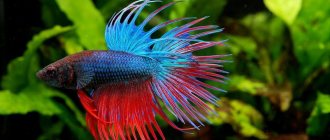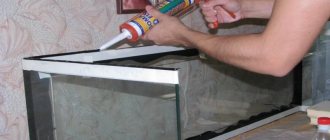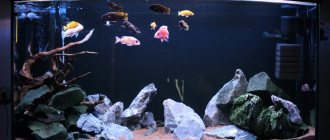No experienced aquarist would dare to breed fish without the necessary equipment to set up an aquarium.
And a special role here is played by the filter, which is used for mechanical and biological purification of water, as well as for enriching it with oxygen.
Today, a large selection of filters is presented on the shelves of pet stores.
You can buy both internal compact filters for small aquariums, and external ones for installation outside and purification of large volumes of water.
But it is not at all necessary to buy an expensive device; you can make it yourself. The list of required parts will depend on the type of filter, as well as the size of the aquarium.
And if you are wondering how to make a silent aquarium filter yourself , this article is for you.
How to make it yourself
The cleaner is created from scrap materials that are sold in hardware stores. One device is used in containers up to 500 liters. For a larger aquarium, two units are needed. Before manufacturing, it is worth understanding the principle.
How does it work
Homemade external aquarium filters provide biological filtration. Cleansing takes place according to the following scheme:
- Water is pumped through a tube using a pump.
- In the device, liquid passes through filter parts. Bacteria convert ammonium into nitrates.
- Clean water returns through the outlet tube.
After starting, the filter works like a mechanical one, after 2–4 weeks the number of beneficial bacteria inside the filler increases, and natural cleaning of the aquarium environment occurs.
Necessary materials
To design an external filter, you will need:
- base (bottle or canister);
- material for filter cassettes (plastic pots);
- hoses or flexible pipes;
- electric pump;
- fitting;
- padding polyester or cotton wool;
- foam sponge.
For an aquarium with a volume of 100 liters, a plastic bottle is suitable, for spacious vessels - a canister or a plumbing pipe with plugs. The material for filter cassettes can also be a kitchen mesh, a vegetable drawer or a container of suitable diameter. New components are purchased, since the old ones contain toxins accumulated during operation. Materials must be non-toxic. Metal elements without lubrication and protected from direct contact with water are suitable. It is better to choose hoses that are durable and without kinks.
Types of filter materials
Modern biological filters use a variety of fillers. Each has certain characteristics and, accordingly, advantages and disadvantages. Aquarists mainly use:
Foam rubber or synthetic winterizer . Perhaps they are the most common. This is explained by their versatility and effectiveness. First of all, they provide mechanical cleaning. They retain feces and various solid impurities. But at the same time, bacteria also settle in them. They are usually installed in internal biofilters. However, this option is not suitable for large aquariums, since it is not able to cope with a large load and gets clogged quite quickly;
Bioceramics . Also quite a popular filler. Often present in the basic configuration of external canister-type filters. Their properties make them optimal for outdoor equipment. They disperse oxygen perfectly, and in addition, colonies of bacteria easily settle in them. In addition, they do not carry out mechanical cleaning, and accordingly, contaminants do not linger in them, and therefore they need to be washed extremely rarely;
Plastic . You can often find filter materials such as plastic balls in stores. They have a ribbed surface. Microorganisms grow in it, and thanks to the cutting of the water flow, all these pores are saturated with oxygen, necessary for invisible biological cleaners;
Glass . Recently, porous glass has become in demand. It is manufactured using special technology. Thanks to it, the output is balls 8-12 mm in diameter. Bacteria quickly appear in them, processing dangerous compounds in aquarium water.
Other models
In addition to external filters, there are other filters for aquariums.
Airlift
Such devices purify water using air. They are gradually losing their popularity due to low efficiency. Inexpensive, they can be made at home. You can make an air filter from a plastic tube. At the upper end there is a square that supplies water. A hose is inserted at the bottom of the tube, on which a sponge is placed.
Mounted
For a small aquarium, you can make a hanging filter with your own hands. A glass or plastic container in which partitions are made is suitable for manufacturing. The first compartment contains padding polyester, the remaining compartments are filled with filter media. Water is supplied by a compressor.
Why do you need a water purifier?
The aquarium filter performs the most important functions by maintaining a constant internal environment in the tank.
The purpose of this device is to:
- mechanically purify water from dirt;
- eliminate harmful decomposition products of organic matter by physical, chemical and biological means;
- mix water, improving gas exchange;
- in some cases, additionally enrich the water with oxygen.
Often, pampered tropical fish even die in a tank in which the water is not constantly filtered. It is not for nothing that aquarists around the world have not stopped using devices from this group for many decades.
How to care
It is necessary to carefully monitor the operation of the equipment: filtration occurs without interruptions and leaks. As pollution occurs, the power decreases and the water pressure weakens. Filter sponges are periodically checked and replaced with new ones when worn out.
Cleaning
The filter device must be washed with water taken from the aquarium to prevent disturbance of the bacterial environment. The filler is washed with extreme care. Thorough rinsing is detrimental to beneficial bacteria.
A complete flush is carried out every six months.
Why do you need a phytofilter?
In fact, this is another type of filtering equipment. However, its main difference is its exclusively natural purification. This is a large structure that includes a pump, pumping water, a pot and indoor plants. They are planted in a special substrate through which a current constantly passes, and thus natural water purification occurs. Nitrates and phosphates released from food residues, fish feces and rotting plants are absorbed by the roots of indoor flowers.
Of course, bacterial cleaning can be carried out by both ordinary and underwater plants. However, in some cases, it is not possible to plant natural bushes of the same Vallisneria, Echinodorus, Hygrophila due to their incompatibility with the inhabitants of the aquarium (a striking example is cichlids). But in order for the indoor underwater world to remain clean and the fish not to die, it is necessary to ensure high-quality filtration. A phytofilter for an aquarium is designed to cope with such a task.
Common mistakes
- When assembling the external filter, the component elements are not properly sealed, which increases the likelihood of a leak. Do not skimp on the sealant when gluing.
- Neglecting to check leaks or not taking enough time to identify defects can lead to leaks. The adhesive curing time and conditions must also be fully observed.
- Lack of pump power will not provide the necessary filtration of spacious containers. For an aquarium with a volume of 100 liters, a pump with a capacity of 500 l/h or more is suitable.
If you have doubts about your skills, it is better to buy a ready-made external filter. Poorly made equipment will cause a lot of problems for the aquarist and the fish.
Previous
AquariumHow to make the best nutrient soil for plants in an aquarium with your own hands?
Next
AquariumStep-by-step instructions for starting an aquarium from scratch: location, soil, water, fish
Tips for aquarists
If the filter suddenly fails and there is a very large release of contaminants back into the water, emergency measures must be taken. Such decisive actions most often include a complete reboot of the aquarium.
It is produced in several stages:
- First, all residents should be resettled in separate tanks.
- Throw away the old soil or treat it thoroughly by rinsing it under running water and calcining it in the oven for at least an hour at a temperature of 180-200 °C.
- Replace all filter elements and the device itself, and, if necessary, the aerator.
- The decorations should be washed with a stiff brush and then soaked in a concentrated (dark) solution of potassium permanganate for 15 minutes.
- The aquarium container itself can be washed with potassium permanganate or peroxide. The ideal option is to fill the container with a bright pink permanganate solution for at least three hours.
- Having refilled the soil, installed decorations and equipment, it is necessary to fill the aquarium with settled water. Allow the system to settle for 4-7 days, and only then plant the plants and, after a couple of days, introduce the fish.
This case describes a process carried out to neutralize nitrate contamination and attack by blue-green algae (cyanobacteria) that have settled in the pores of the filter material. Remember that restarting is a dangerous process for fish; it should be resorted to only in extreme cases so that the risk is justified.
Basic Rules
Beginners among aquarists should remember a number of simple rules for working with a filter.
What you should pay attention to first:
- Some unpretentious small fish, for example, guppies, catfish and platies, can live without a filter, provided that there are 10 liters of water per individual for viviparous fish and 15-17 for one catfish.
- Investigate the noise issue. The threshold of 45 dBA, especially at night, cannot be exceeded. Higher intensity noise will be annoying and even make it difficult to concentrate.
- Even if you trust Chinese brands, it is better for beginners to choose inexpensive devices of Polish, Italian and German origin - they are more reliable and easier for an inexperienced aquarist to handle.
Take proper care of your pets, and they will delight you for many years.
Plants for phytofilter
You cannot use any indoor flowers. In order for the filter to function as efficiently as possible, they must have the appropriate characteristics. It is important that they grow quickly and absorb nutrients well. For example this:
- Ficus repens;
- Spathiphyllum;
- Fittonia;
- Chlorophytum crested;
- Tradescantia.
Plants that do not tolerate high humidity and are characterized by short growth are not suitable. Their roots will eventually begin to rot and will endanger the lives of all fish.
Construction and principle of operation
Various biological filters simply oxidize toxic substances formed in water. They certainly become safer, but in excess concentration they harm the fish.
Conventional filters contain a special filler (for example, ceramic rings), in which, over time, colonies of bacteria appear that process ammonia and nitrites. As a result, nitrates remain in the water. Also, do not forget about phosphates formed after the decomposition of feed and organic matter in the soil.
Nitrates and phosphates are food for aquarium plants, but if they cannot fully absorb them, then their concentration will increase to a dangerous level and as a result the fish may die. In addition, in some aquariums there are no living plants, and then phosphates and nitrates will not be absorbed at all.
The phytofilter is based on a different operating principle from conventional filters:
- A special pump removes water from the container and directs it upward;
- The liquid falls into a pot located above the aquarium. It is filled with various indoor plants (eg ferns, monstera);
- The water in the pot flows to the other end, passing through the substrate (for example, expanded clay) and the roots of the flowers. Thus, all nutritious and at the same time dangerous elements are absorbed by the surface flora;
- The water, completely purified from nitrates and phosphates, goes back into the aquarium, and then the cycle repeats.
Substrate for phytofilter
It is one of the most important elements, but does not carry any cleansing function. Soil is needed solely to hold the plants so that they can freely take root. Therefore, it is better to choose a light substrate. These include expanded clay, filter ceramics, and gravel.
The layer should be at least 10 and no more than 20 cm. The more, the better, but it is important not to overdo it, since oxygenated water must reach the roots, otherwise they will begin to rot.
